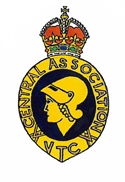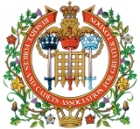 Volunteer Training Corps
Volunteer Training Corps
The Volunteer Training Corps (VTC) was an organisation that came about with the surge of public enthusiasm to, in some way, give time towards the defence of the realm in Great Britain's hour of need.
Haldane's reforms to the Armed Forces had intended that the new Territorial Force (TF) would be responsible for Home Defence leaving the Regular Army to concentrate on landing an expeditionary force on the mainland of Europe, without the additional responsibility of defending Great Britain if need be.
War was declared against Germany on 4th August 1914 and within 19 days the first shots were fired at Mons by regular British infantry. However, as the British Expeditionary Force (BEF) began its retreat from that Belgian town it became clear that the rate of casualties amongst the BEF meant the reserves of the Regular Army would soon be exhausted. In September 1914, the British Army began to withdraw from its garrisons all over the world closely followed by troops from the armies of the British Empire in order to quickly reinforce the BEF, thus preventing its possible defeat and evacuation back to the UK.
However, before the Regular Army could leave the overseas territories they would have to be replaced, preferably sooner rather than later. The Territorial Force were therefore required to abandon their Home Defence role and instead go to the support of the Regular Army, both in the outposts of the Empire and in France and Belgium.
The result was that a major plank of Home Defence strategy disappeared in a very short space of time.
Shoring up the Defences
The fear of a German invasion of the UK mainland was an ever present threat in one form or another, from the declaration of war until the cessation of hostilities. Throughout that period there were several schemes in place for Homeland defence mainly using training establishments, reserves, Coastal Garrison Artillery and various B graded units. However, at this time there was a group of volunteers who were unable to enlist for a variety of reasons but were prepared to give their time in the capacity of Homeland Defence Auxiliaries later to be known as the Volunteer Training Corps.
The Role
Some, including the volunteers themselves, were quite clear as to which part of the Home Defence plan would be intrusted into their care. This included the defence of key installations such as factories and railway lines or any other establishment within the local area thought to be at risk from saboteurs or an invasion by a determined enemy force, if not a full scale invasion. Initially, when some form of invasion was considered a real threat, the volunteers spent much of their time digging trenches in defence of the Capital. It was, however, the guarding of key points where the VTC would have been most useful if only in relieving regular units for other work more directly involved with the war in Europe.
Recruiting for the VTC
Initially the VTC were recruited, trained and led from within their own community or by a group of like-minded individuals with similar past times. The VTC could not help but be similar in social structure to the Territorial Force and its predecessors, but there the similarity ended, for as much as there was encouragement from the civic community there was only tacit approval from a Government concerned with the cost involved and in addition there was a distinct lack of cooperation from the War Office. However, what was evident was that a military-style volunteer movement some 285,000 strong nationwide needed some form of national leadership and direction. Both came in the form of the volunteer committee that was set up in Finsbury Barracks acting as the Directorate of the organisation.
Whilst there was no shortage of men coming forward to volunteer for the VTC, there was a feeling in Government and from the War Office that apart from those in the organisation who were genuine in their claim to be in a reserved civilian occupation, medically unsuitable, too young or too old for military service, there would be others who would use service with the VTC as an excuse not to volunteer for the Regular Forces or the Territorial Army. As the war progressed and the calls for more men to join the fighting formations increased, so the VTC became a subject for constant scrutiny.
Uniform and Equipment
From its beginnings, the War Office were reluctant to encourage the VTC, but as the casualty lists from the front and the demand for manpower increased, there was some small recognition that the VTC might be useful and the organisation was afforded some small approval in as much as it could undertake basic military training. However, it would not be supplied with weapons or military uniform and would not be allowed to use military ranks. The authority for the members of the VTC to carry out their duties was invested in a red arm band with the letters G R in gold giving the organisation its nickname ‘Gorgeous Wrecks'.
Finally, the War Office became responsible for the VTC and the basic military dress, ranks and weaponry were put into place. As a further step towards regularisation, the original central committee was disbanded and the responsibility for the VTC was placed with the Territorial Associations.
Territorial Associations operating within the now Greater London area who were responsible for the VTC:
County of London
City of London
County of Middlesex
County of Essex
County of Surrey
County of Kent
Disbandment
The Volunteer Corps (VTC) was eventually stood down when the German Army was no longer capable of threatening the United Kingdom with invasion. Most of its duties at this stage were taken over by a new Regiment, The Royal Defence Corps.
Throughout WW1, there had been a serious, albeit lessening, threat of invasion and had the VTC been taken seriously by the Government and the War Office from the beginning, then other formations vital to the conduct of the war need not have been so entirely diverted to home defence.
By the outbreak of WW2 the lesson had obviously been learned, in that the Government called for volunteers for the Home Guard (Local Defence Volunteers) to enrol within eight months of war being declared.
